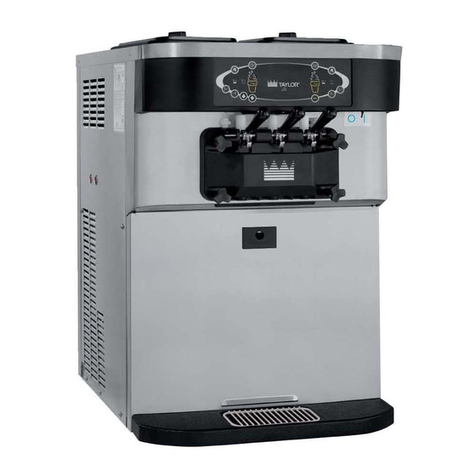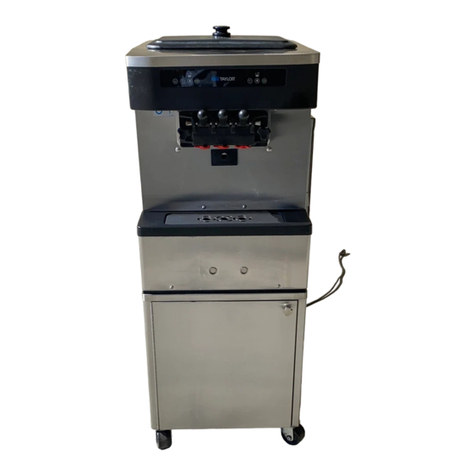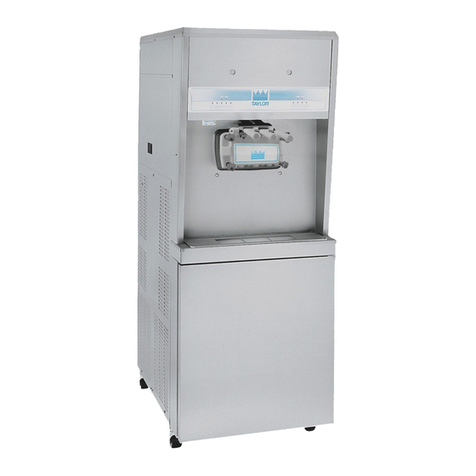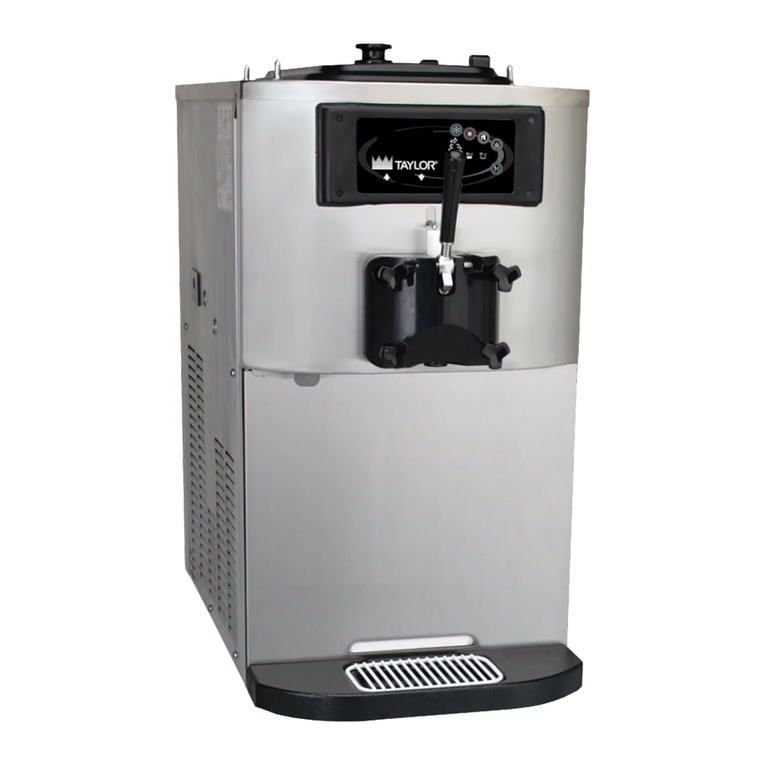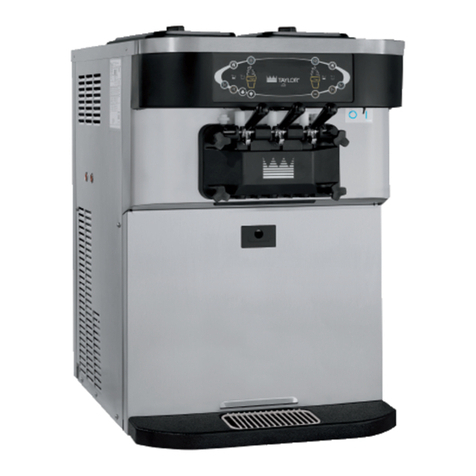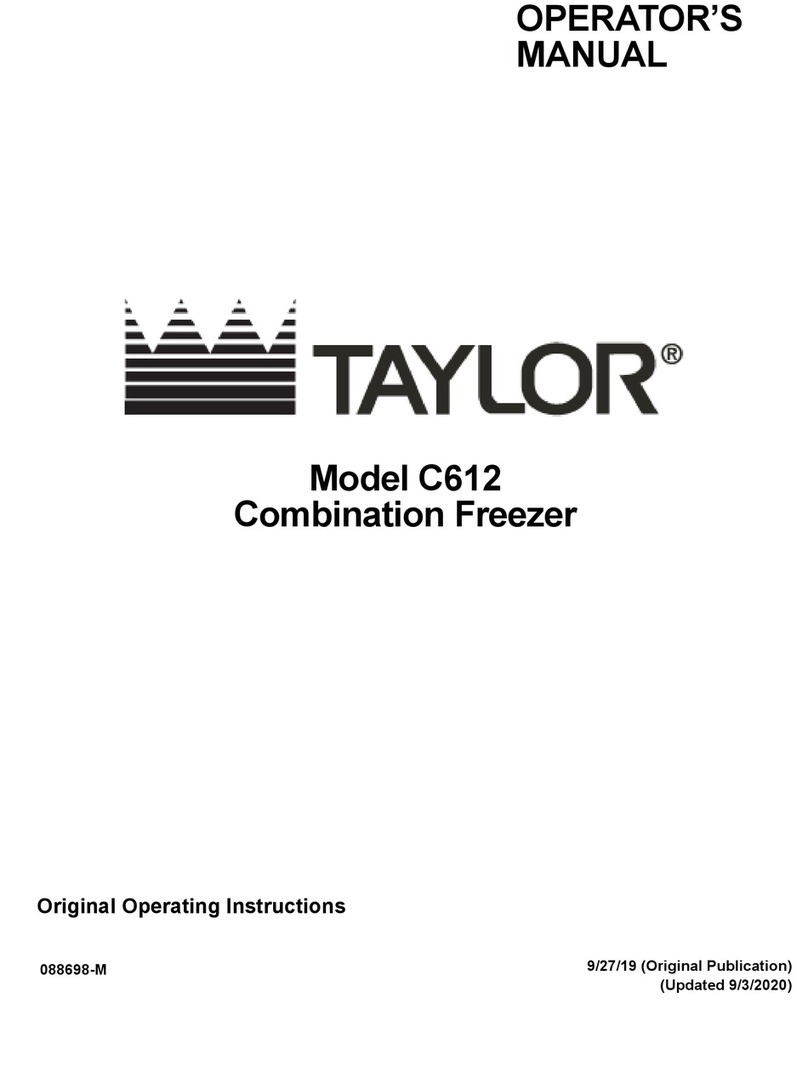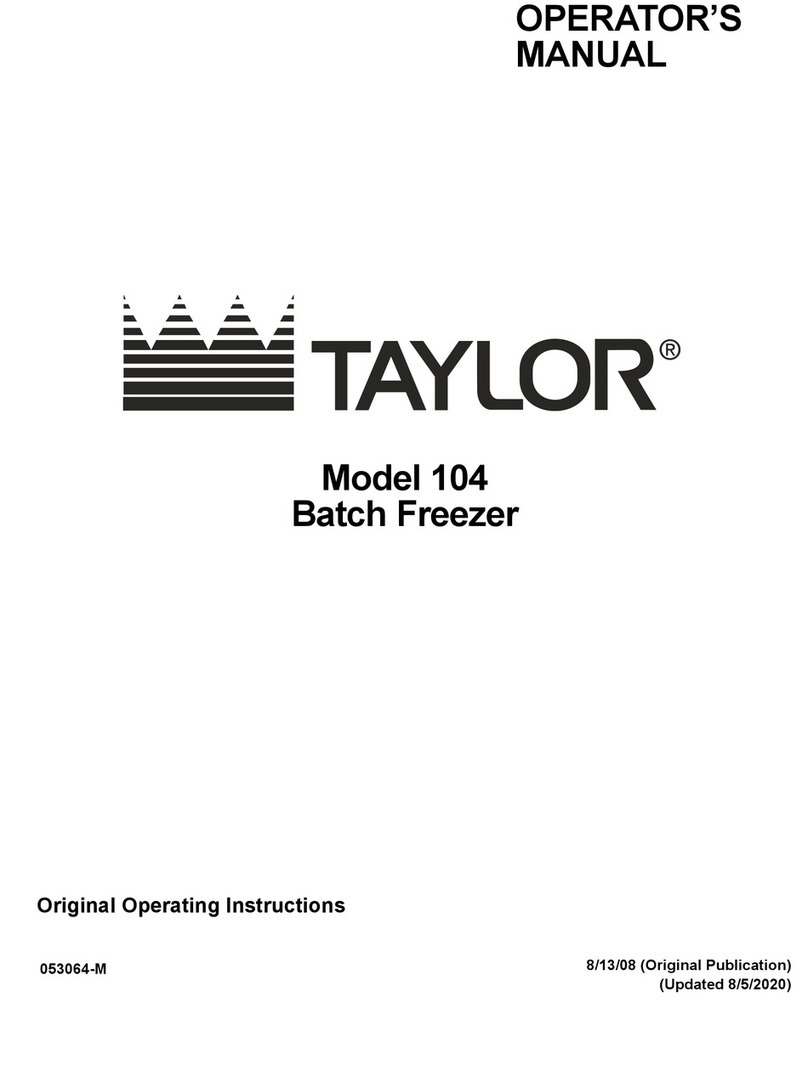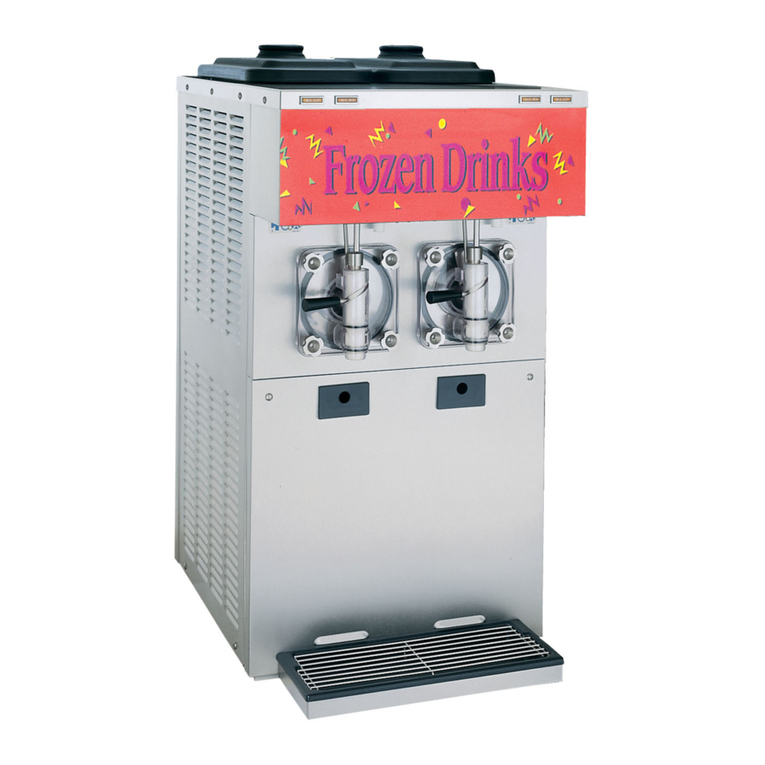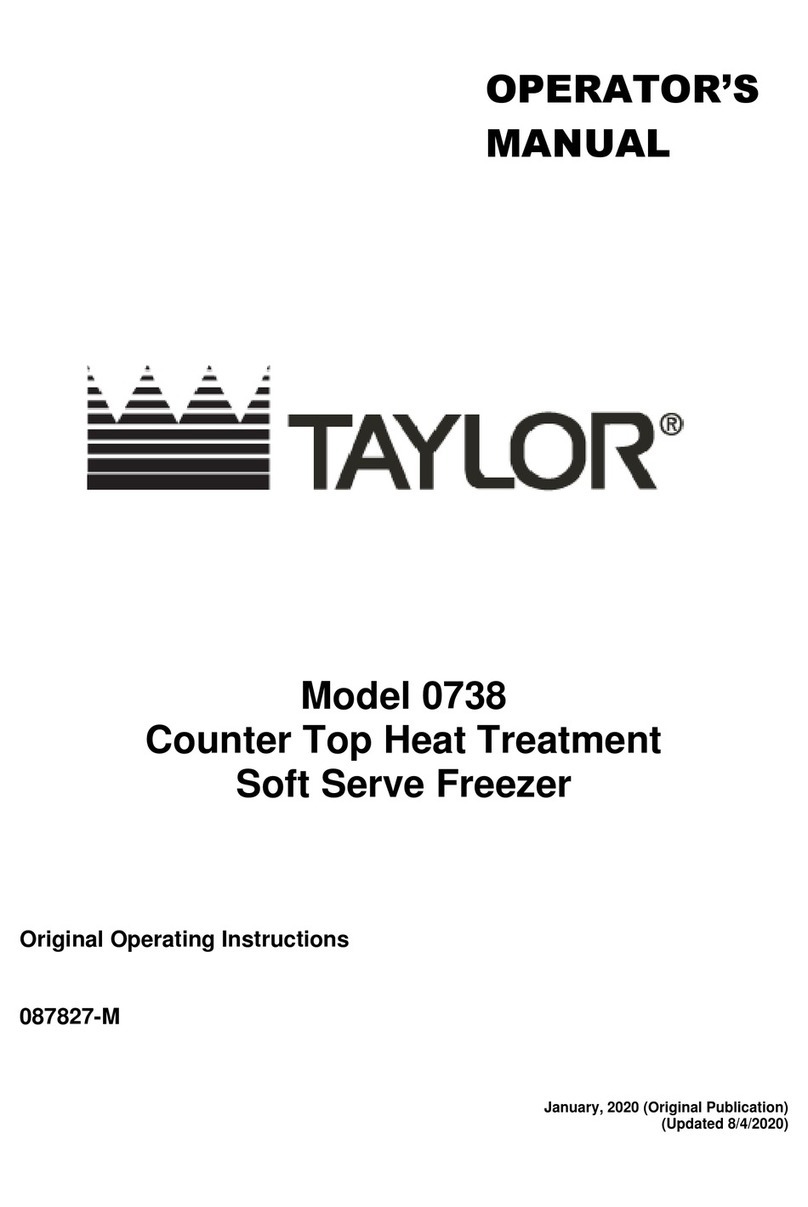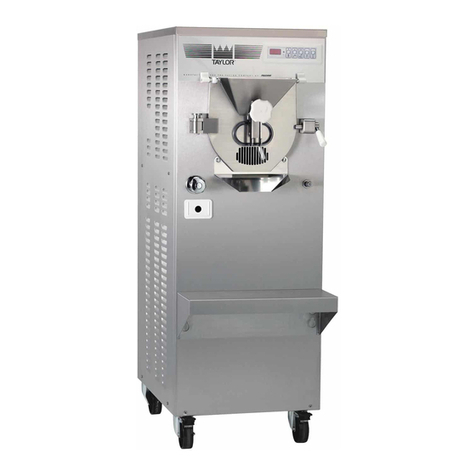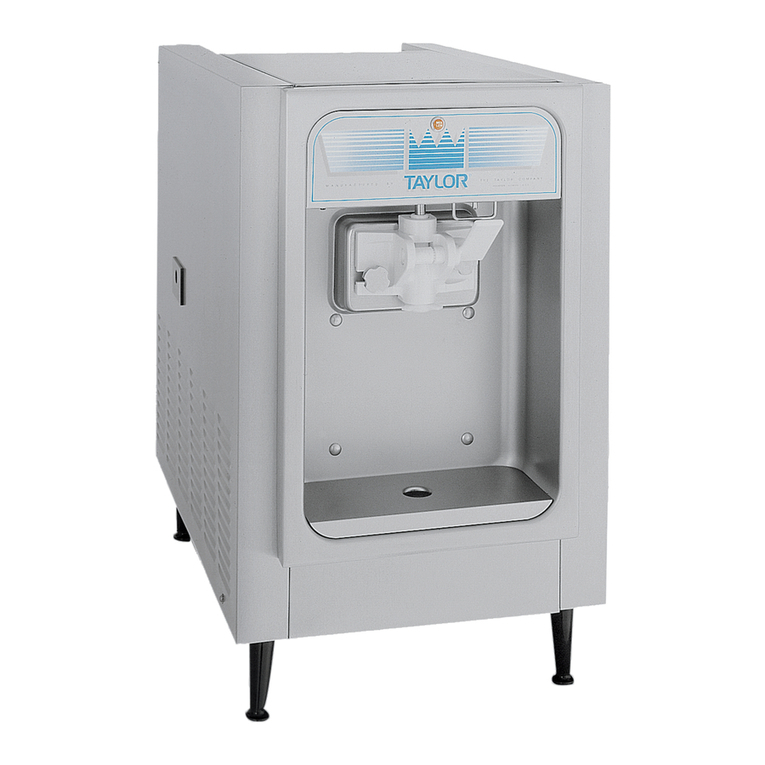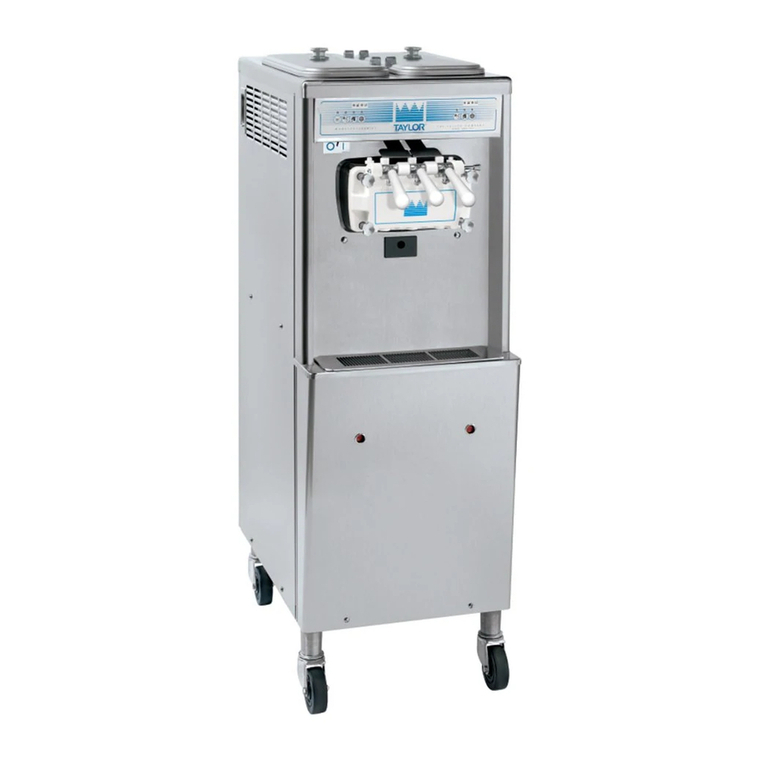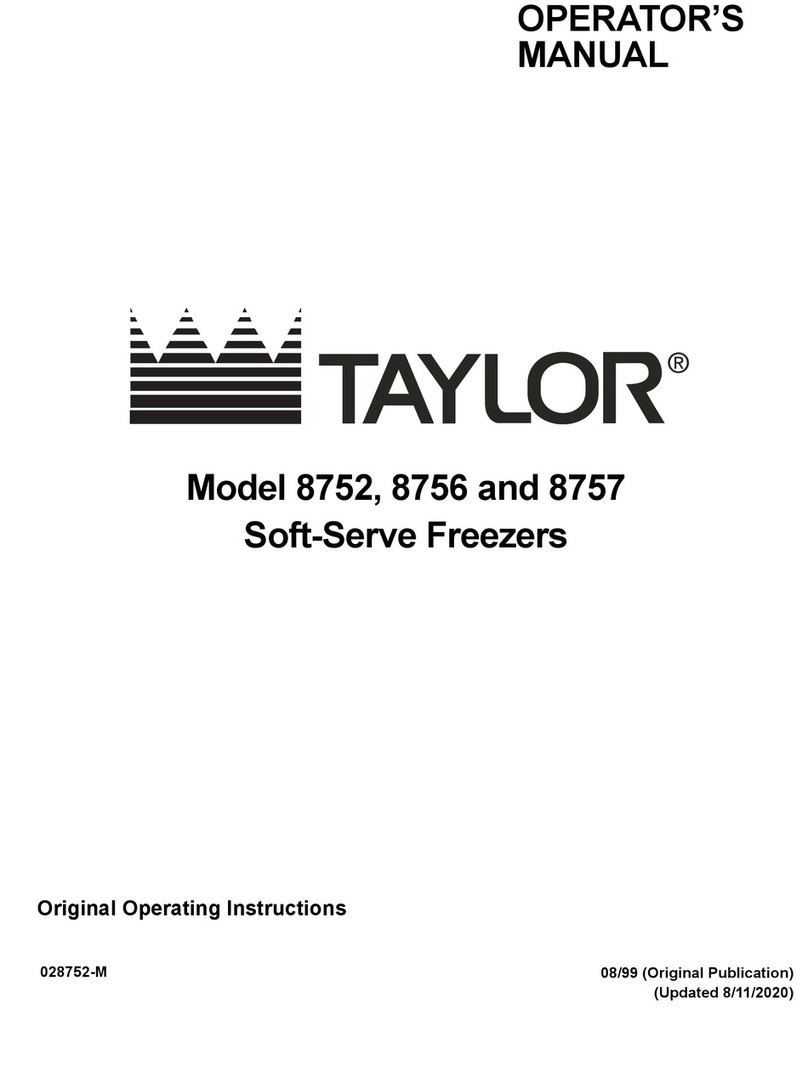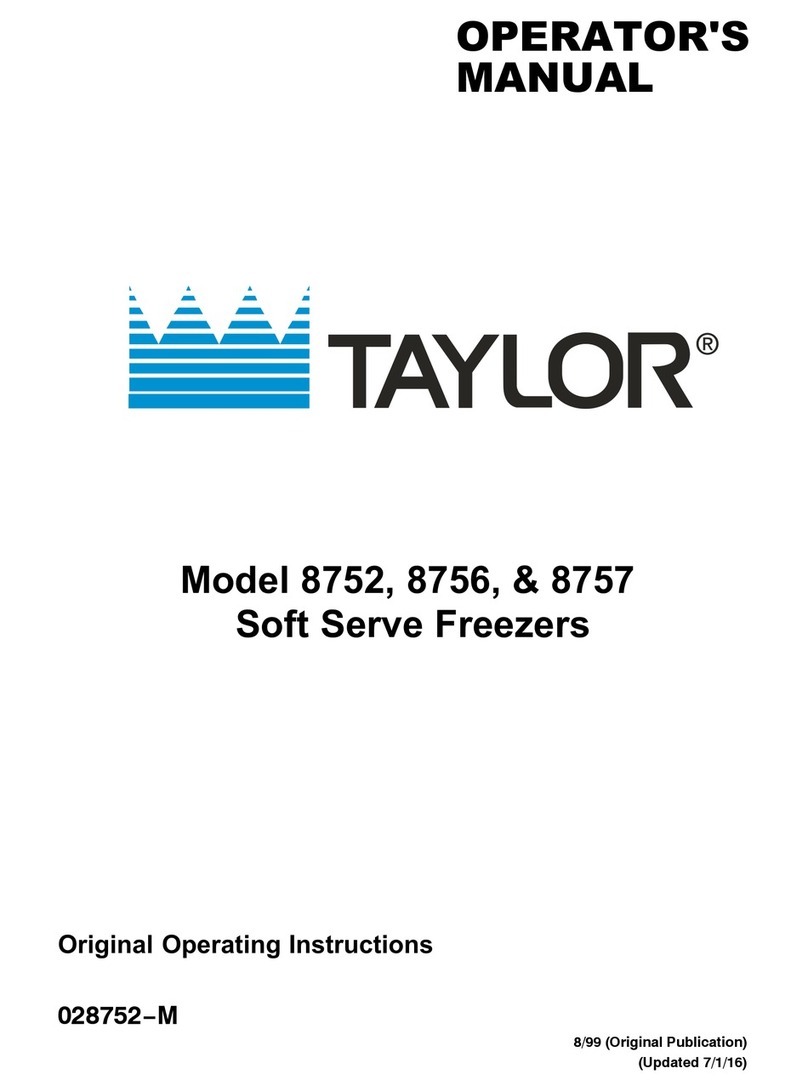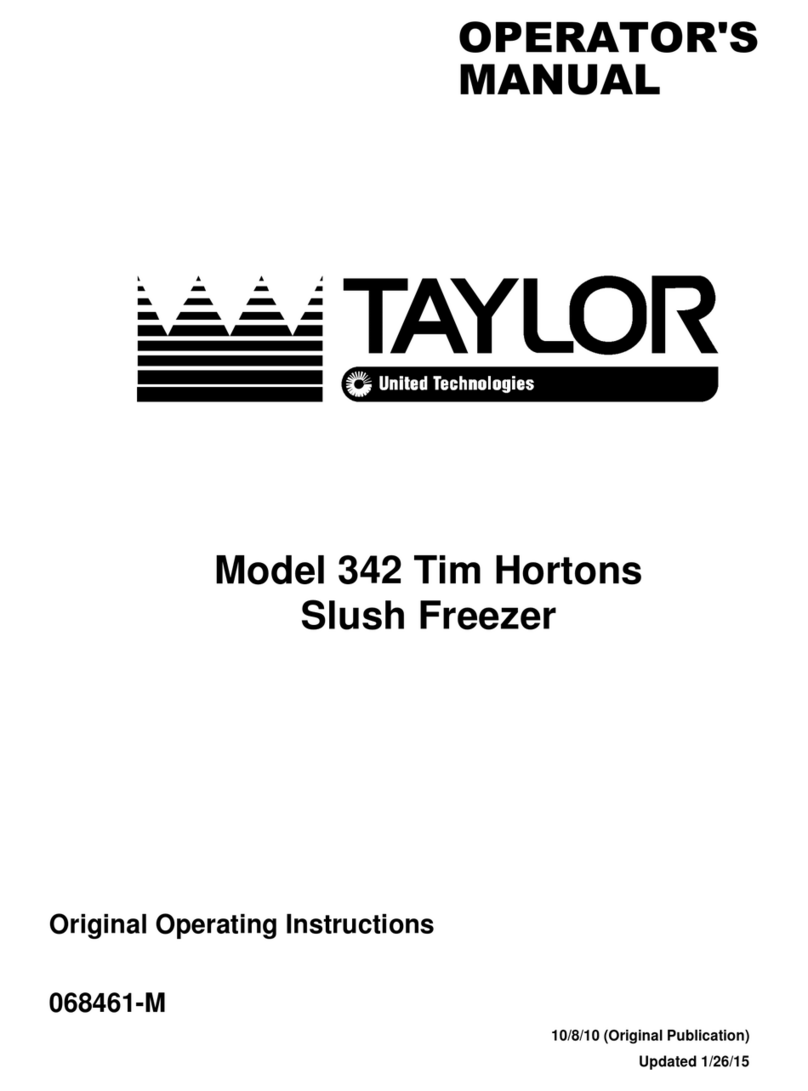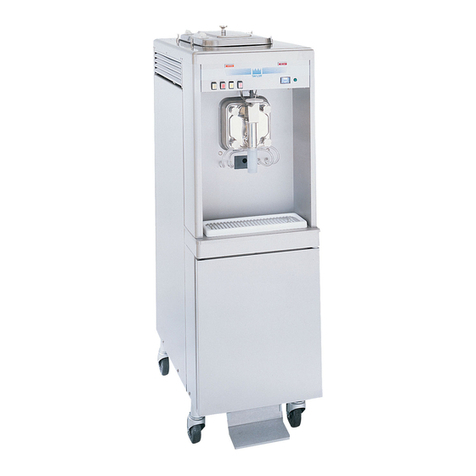
6
Introduction Model 428
General Installation Instructions
The following are general installation instructions.
For complete installation details, please see the
checkout card.
Site Preparation
Review the area where the unit will be installed
before uncrating the unit. Make sure all possible
hazards to the user or equipment have been
addressed.
Clearance: Air Cooled Units
Minimum air clearances must be met to assure
adequate air flow for optimum performance. Failure
to allow for adequate clearance can reduce the
refrigeration capacity of the freezer and possibly
cause damage to the compressor.
Standard 428 units require a minimum of 6” (152
mm) of clearance on both sides of the freezer. It is
recommended to place the rear of the unit against
the wall.
For Indoor Use Only: This unit is designed to
operate indoors, under normal ambient
temperatures of 70_ 75_F (21_ 24_C). The
freezer has successfully performed in high ambient
temperatures of 104_(40_C) at reduced capacities.
This unit must NOT be installed in an area
where a water jet or hose can be used. NEVER use
a water jet or hose to rinse or clean this unit. Using a
water jet or hose on or around this equipment may
result in electrocution to the user or damage to the
equipment.
This unit must be installed on a level
surface to avoid the hazard of tipping. Extreme care
should be taken in moving this equipment for any
reason.
Two or more people are required to safely move this
unit. Failure to comply may result in personal injury
or equipment damage.
Uncrate the machine. Inspect the unit for damage.
Report any damage to the Taylor factory
immediately.
This piece of equipment is made in the USA and has
USA sizes of hardware. All metric conversions are
approximate and vary in size.
Installer Safety
In all areas of the world, equipment should
be installed in accordance with existing local codes.
Please contact your local authorities if you have any
questions.
Care should be taken to ensure that all basic safety
practices are followed during the installation and
servicing activities related to the installation and
service of Taylor equipment.
SOnly authorized Taylor service personnel
should perform installation and repairs on
the equipment.
SCord Connected Units: Only Taylor
authorized service personnel may install a
plug on this unit.
SAuthorized service personnel should consult
OSHA Standard 29CFRI910.147 or the
applicable code of the local area for the
industry standards on lockout/tagout
procedures before beginning any installation
or repairs.
SAuthorized service personnel must ensure
that the proper PPE is available and worn
when required during installation and
service.
SAuthorized service personnel must remove
all metal jewelry, rings, and watches before
working on electrical equipment.
THIS UNIT HAS MANY SHARP EDGES
THAT CAN CAUSE SEVERE INJURIES.
Examples:
Sscraper blades
Scondenser fins
